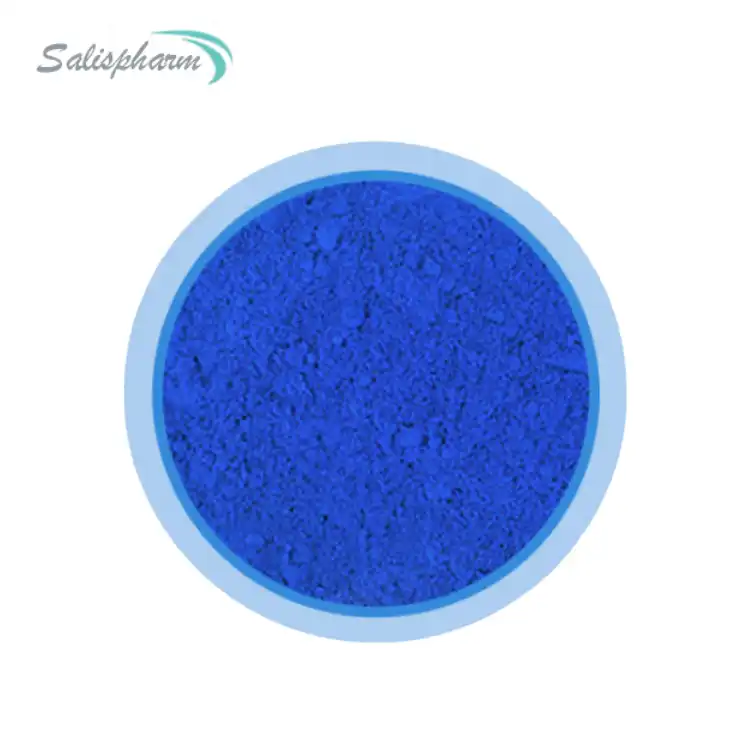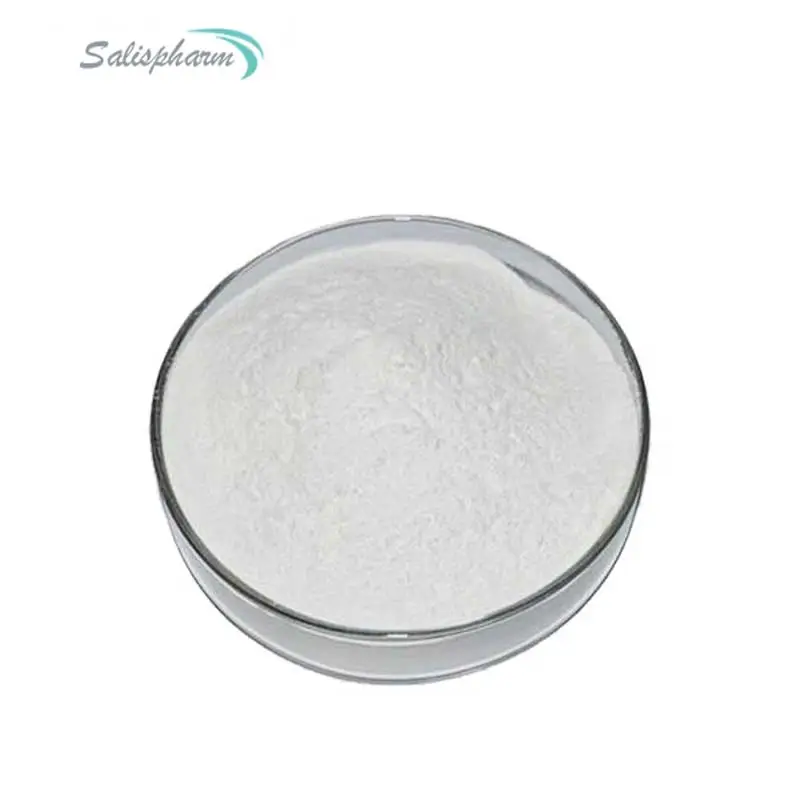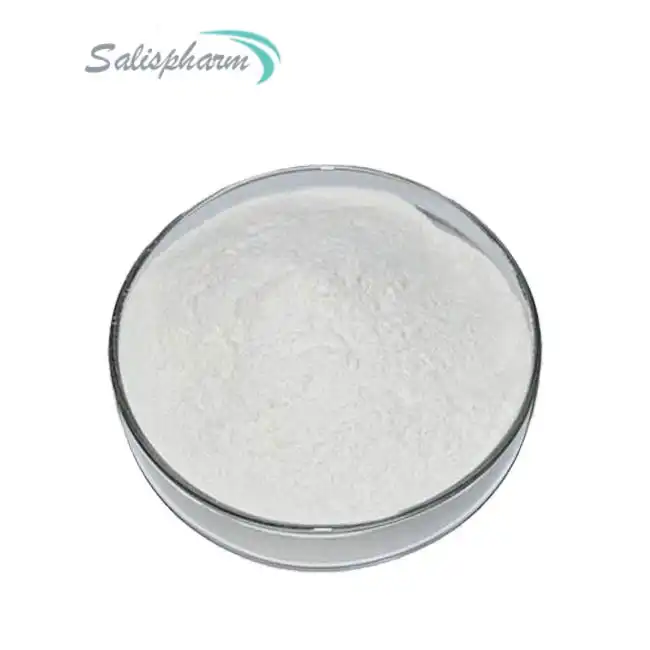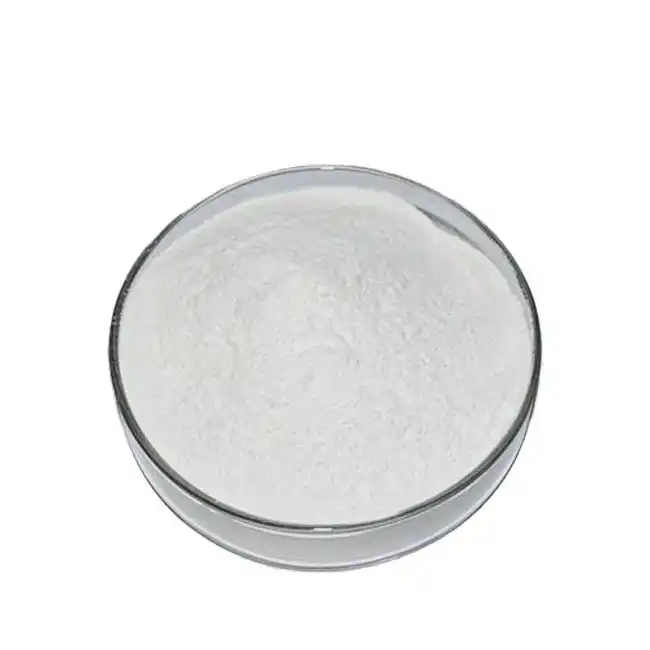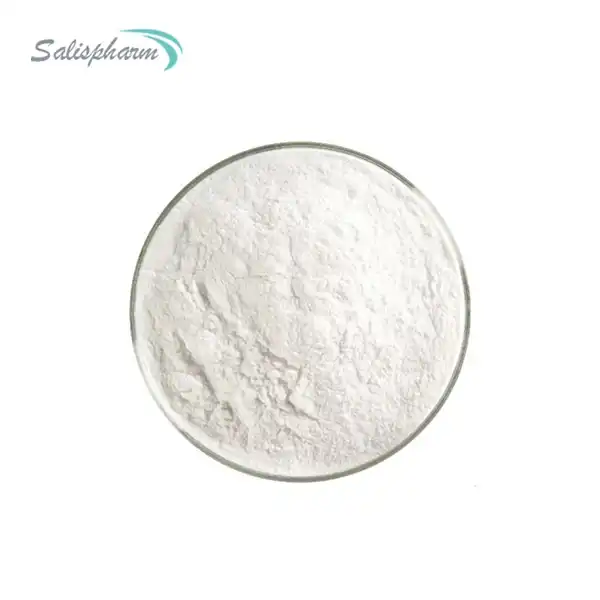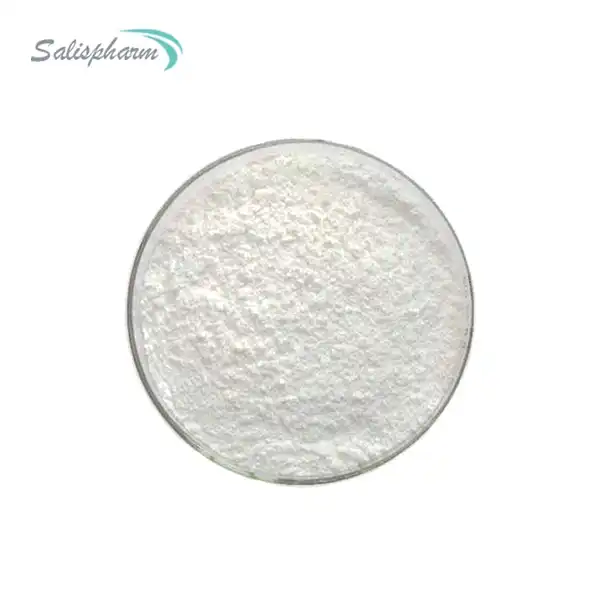Isosorbide Dinitrate (ISDN) Powder is a crucial medication used in the treatment of angina pectoris and heart failure. As a nitrate vasodilator, it works by relaxing blood vessels, improving blood flow, and reducing the workload on the heart. Understanding the correct dosage of Isosorbide Dinitrate Powder is essential for its safe and effective use in managing cardiovascular conditions. This blog post will explore the various aspects of ISDN dosage, including factors that influence it, proper administration techniques, and important considerations for patients and healthcare providers.
How does Isosorbide Dinitrate Powder differ from other nitrate medications?
Isosorbide Dinitrate Powder belongs to a class of medications known as nitrates, which are widely used in the management of cardiovascular conditions. However, ISDN has some unique characteristics that set it apart from other nitrate medications.
Firstly, ISDN is a long-acting nitrate, which means it provides extended relief compared to short-acting nitrates like nitroglycerin. This makes it particularly useful for the prevention of angina attacks and the long-term management of heart failure. The powder form of ISDN offers greater flexibility in dosing compared to tablets or capsules, allowing for more precise titration of the medication.
Another key difference is the route of administration. While many nitrates are available as sublingual tablets or transdermal patches, ISDN powder is typically administered orally or used to compound other formulations. This versatility allows healthcare providers to tailor the treatment to individual patient needs.
ISDN also has a unique metabolism profile. It is a prodrug that undergoes hepatic metabolism to form two active metabolites: isosorbide-2-mononitrate and isosorbide-5-mononitrate. These metabolites contribute to the overall therapeutic effect and influence the dosing regimen of ISDN.
Furthermore, ISDN powder may have a more rapid onset of action compared to some other nitrate formulations. This can be particularly beneficial in situations where quick relief of angina symptoms is needed, while still providing the benefits of extended duration of action.
Lastly, the powder form of ISDN may be preferred for patients who have difficulty swallowing tablets or capsules. It can be easily mixed with water or other liquids, making it a suitable option for elderly patients or those with swallowing difficulties.
Understanding these differences is crucial for healthcare providers when selecting the most appropriate nitrate medication for each patient and determining the optimal dosage regimen.
What factors influence the appropriate dosage of Isosorbide Dinitrate Powder?
Determining the appropriate dosage of Isosorbide Dinitrate Powder is a complex process that involves considering multiple factors. Healthcare providers must carefully evaluate each patient's individual circumstances to ensure safe and effective treatment.
One of the primary factors influencing ISDN dosage is the severity of the patient's condition. Patients with more severe angina or heart failure may require higher doses to achieve adequate symptom control. However, this must be balanced against the risk of side effects, which can increase with higher doses.
The patient's age is another crucial consideration. Older adults may be more sensitive to the effects of ISDN and may require lower initial doses. Additionally, age-related changes in liver and kidney function can affect the metabolism and elimination of the drug, necessitating dose adjustments.
Body weight and composition also play a role in determining the appropriate ISDN dosage. Generally, larger individuals may require higher doses to achieve therapeutic effects, while smaller individuals may need lower doses to avoid excessive drug concentrations.
Concurrent medications can significantly influence ISDN dosage. Certain drugs may interact with ISDN, either enhancing or diminishing its effects. For example, sildenafil and other phosphodiesterase inhibitors can potentiate the blood pressure-lowering effects of ISDN, requiring careful dose adjustment and monitoring.
The presence of comorbidities is another important factor. Patients with liver or kidney dysfunction may have altered drug metabolism or elimination, necessitating dose adjustments. Similarly, patients with certain cardiovascular conditions, such as hypertrophic cardiomyopathy or aortic stenosis, may require special considerations when dosing ISDN.
Individual patient response and tolerance to ISDN can vary significantly. Some patients may experience rapid tolerance development, requiring dose escalation or alternative dosing strategies to maintain efficacy. Others may be particularly sensitive to the side effects of ISDN, necessitating lower doses or more gradual titration.
The intended use of ISDN also influences dosing. When used for angina prevention, a different dosing regimen may be employed compared to its use in acute angina relief or chronic heart failure management.
Lastly, the formulation of ISDN being used can affect dosing. The powder form allows for more precise dose titration compared to fixed-dose tablets, enabling healthcare providers to fine-tune the dosage based on individual patient needs and responses.
By carefully considering these factors, healthcare providers can determine the most appropriate dosage of Isosorbide Dinitrate Powder for each patient, maximizing therapeutic benefits while minimizing the risk of adverse effects.
How should Isosorbide Dinitrate Powder be administered for optimal efficacy?
Proper administration of Isosorbide Dinitrate Powder is crucial for achieving optimal efficacy and minimizing the risk of side effects. Healthcare providers and patients should be well-informed about the correct techniques and timing of ISDN administration to ensure the best possible outcomes.
The most common method of administering ISDN powder is oral ingestion. The powder should be thoroughly mixed with water or another suitable liquid immediately before consumption. It's important to use the entire prepared dose to ensure accurate dosing. Patients should be instructed to drink the mixture promptly after preparation, as the stability of the solution may decrease over time.
Timing of administration is a critical aspect of ISDN therapy. For the prevention of angina, ISDN is typically administered on a scheduled basis rather than as needed. The dosing schedule is designed to provide continuous nitrate effects throughout the day while allowing for a nitrate-free interval to prevent tolerance development.
A common dosing regimen involves administering ISDN two or three times daily, with the last dose given no later than 7 PM. This schedule helps maintain therapeutic levels during waking hours while allowing for a nitrate-free period overnight. However, the specific dosing schedule may vary based on individual patient needs and response to treatment.
It's crucial to maintain consistency in the timing of ISDN administration. Taking doses at the same times each day helps maintain steady drug levels and optimize therapeutic effects. Patients should be advised not to double up on doses if they miss one; instead, they should take the next scheduled dose as normal.
For patients using ISDN for acute angina relief, healthcare providers may recommend a different administration approach. In such cases, the powder may be dissolved in a small amount of water and held in the mouth for sublingual absorption. This method can provide faster onset of action compared to swallowed doses.
To maximize the effectiveness of ISDN, patients should be advised to avoid consuming the powder with meals, as food can affect drug absorption. It's generally recommended to take ISDN on an empty stomach, about 1 hour before or 2 hours after meals.
Proper storage of ISDN powder is essential for maintaining its efficacy. The powder should be kept in a tightly closed container, protected from light and moisture, and stored at room temperature unless otherwise directed by a pharmacist.
Patients should be educated about the importance of gradual dose titration when initiating ISDN therapy or adjusting doses. Starting with a low dose and gradually increasing it allows the body to adapt to the medication and helps minimize side effects such as headaches or dizziness.
It's also crucial for patients to understand the concept of nitrate tolerance and the strategies used to prevent it. This may include scheduled dosing with a nitrate-free interval or the use of intermittent therapy regimens as directed by their healthcare provider.
Lastly, patients should be instructed to monitor their response to ISDN and report any changes in efficacy or the occurrence of side effects to their healthcare provider. This feedback is essential for optimizing the dosing regimen and ensuring the best possible outcomes from ISDN therapy.
By following these administration guidelines and working closely with their healthcare providers, patients can maximize the benefits of Isosorbide Dinitrate Powder while minimizing potential risks and complications.
If you are also interested in this product and want to know more product details, or want to know about other related products, please feel free to contact iceyqiang@aliyun.com.
References
1. Thadani, U. (2017). Nitrate tolerance, rebound, and their clinical relevance in stable angina pectoris, unstable angina, and heart failure. Cardiovascular Drugs and Therapy, 31(2), 185-195.
2. Münzel, T., & Daiber, A. (2018). Nitrate therapy in the era of precision medicine. New England Journal of Medicine, 379(14), 1388-1390.
3. Divakaran, S., & Loscalzo, J. (2017). The role of nitroglycerin and other nitrogen oxides in cardiovascular therapeutics. Journal of the American College of Cardiology, 70(19), 2393-2410.
4. Ferreira, J. C., & Mochly-Rosen, D. (2012). Nitroglycerin use in myocardial infarction patients. Circulation Journal, 76(1), 15-21.
5. Boden, W. E., et al. (2015). Role of short-acting nitroglycerin in the management of ischemic heart disease. Drug Design, Development and Therapy, 9, 4793-4805.
6. Münzel, T., et al. (2014). Physiology and pathophysiology of vascular signaling controlled by guanosine 3',5'-cyclic monophosphate-dependent protein kinase. Circulation, 130(10), 902-920.
7. Tarkin, J. M., & Kaski, J. C. (2016). Vasodilator therapy: nitrates and nicorandil. Cardiovascular Drugs and Therapy, 30(4), 367-378.
8. Banerjee, S., et al. (2017). Nitrate therapy: a narrative review of current use and future developments. European Journal of Heart Failure, 19(9), 1193-1201.
9. Wenzell, R. C., et al. (2019). Nitrates in ischemic heart disease. Cardiology Clinics, 37(4), 375-393.
10. Zimmer, G., et al. (2020). Nitrates: an update on their use in ischaemic heart disease. European Heart Journal - Cardiovascular Pharmacotherapy, 6(2), 129-135.



